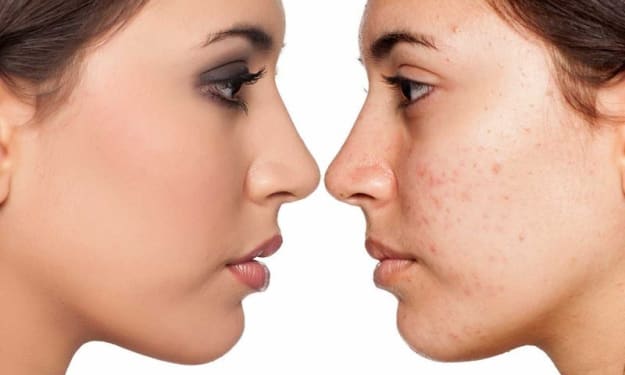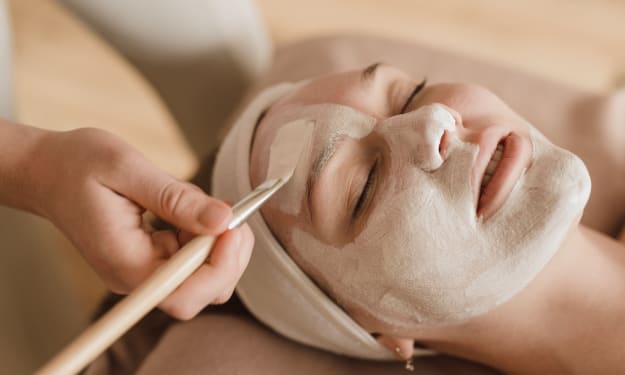1 magic ingredient you need in your skincare routine
My skin at 40 looks better than it did in my 20s, thanks to this one powerful ingredient. You don’t want to miss out.

Fine lines and wrinkles, acne, uneven skin tone, pores, age spots, sunspots and pigmentation — you name the problem and Retinoid is the solution. Science has proven it works, dermatologists swear by it (calling it the ‘gold standard’ in skincare), stores and pharmacies are inundated with its products. However, there is so much confusion around this ingredient that it’s often underutilized or used incorrectly. And therein lies the irony!
I’ve been using it for the past 5 years and my skin has never looked this good. I get complements on my skin asking on what I’ve been doing. But it’s not always been like this.
I’ve had skin problems most of my life, starting with severe cystic acne as a teenager, then adult acne, and later skin pigmentation due to hormonal changes during pregnancy. Add to it the post inflammatory hyperpigmentation, dryness, uneven skin tone, enlarged pores that accompany these conditions. No treatment worked — multiple dermatologist and aesthetician visits, prescriptions ranging from strong drugs to homeopathic, so-called miracle products, diet changes — I tried it all. I even did a round of Accutane (a retinoid given orally to treat severe acne) which I thought had cleared my skin for life, until 6 months later when my acne came back even worse.
My skin was caught in a whirlwind of practitioners and influencers, when I realized:
1. I was being prescribed the same standard products (i.e., highly potent retinoid) which were not suited for my sensitive pigmented skin. Had I been started on a low concentration with guidance on correct usage techniques, it would have been a different story. I didn’t challenge anything either due to my limited knowledge in this area. This further aggravated my skin problems and after jumping from one doctor to another I was left even more frustrated.
2. Lack of expert guidance led me to social media and product marketing — trying out tons of products in hopes that one of them will eventually work. We all fall victim to this; in this process of trial and error we end up doing more damage to our skin (and wallet).
That was the tipping point and thereon started my quest to do my research and dive deeper into the complex world of skincare.
If there is one ingredient that is an absolute must have in your skincare routine, it is hands down a RETINOID.
But importantly, I will guide you on how to incorporate this magic ingredient the right way into your skincare routine — so you can avoid the mistakes I made and get the skin of your dreams.
What is a Retinoid?
It is a derivative of Vitamin A, which when applied topically increases cell turnover and builds collagen resulting in more youthful looking skin. Retinoid is an umbrella term which includes the prescription strength Retinoid and over the counter (OTC) Retinol.
How many types of retinoids are there?
Below are the categories of retinoid. The first three fall under the category of Retinol (available OTC) and contain a lower concentration of the active ingredient retinoic acid — which simply means that they work gradually. It may take up to 6 months to see a difference in your skin. On the other hand, Tretinoin is more intense, and you can expect to see results in as little as 6 weeks.
- Retinyl esters, marketed as retinyl palmitate, retinyl propionate in product ingredients. They are the least active and have minimum anti-aging benefits
- Retinol is the most widely available retinoid on the market and is marketed as retinol in products. It’s formulated in serums, creams, gels and is more potent than esters.
- Retinaldehyde aka Retinal — Yes, retinal with an ‘A’, don’t confuse it with retinol with an ‘O’. Retinaldehyde is more potent and has more anti-aging benefits than retinol.
There are also other retinols you’ll hear about — retinyl retinoate and hydroxypinacolone (HPR), but there is more research needed to prove the efficacy of these when compared to their counterparts.
- Retinoic Acid or Tretinoin (generic name) is the most potent with maximum anti-aging benefits. This should only be used with a prescription.
How to use a retinoid?
1. Begin early — As the saying goes ‘Prevention is better than cure’. You should start in your early 20s and get a head start before the crow’s feet or fine lines kick in.
2. Incorporate retinoid slowly and gently — If you’ve never used it before, start with a lower percentage of the OTC formula once a week to acclimate your skin. A pea sized amount is enough for the full face. If well tolerated you can build up to 2 nights in the second week, followed by 3 nights the third week and eventually to every night. Don’t forget to apply moisturizer either after and/or before — this will help minimize the side effects and maintain a healthy skin barrier.
3. Patience and discipline are key — Don’t expect retinoid to work its magic overnight. As with any skincare product you need to use it consistently to see results, sporadic use will not get the desired outcome.
4. Watch out for side effects — Retinoid use comes with certain side effects that subside as the skin adjusts. Common ones include dryness, peeling, mild irritation, and slight increase in acne activity (called purging). However, if you have especially sensitive skin or conditions like rosacea or eczema, you may want to skip retinoid altogether and try out something less irritating like Bakuchiol. This is a newer ingredient on the scene — not related to retinoid but provides similar benefits to the skin without the side-effects. I’ll write about it in a separate post, so stay tuned.
Also, retinoid should not be used when pregnant or breastfeeding.
5. Avoid conflicting skincare ingredients — Certain products such as vitamin C, benzoyl peroxide, AHAs/BHAs, alcohols should not be paired with retinoid as they make them less effective and increase the skin’s sensitivity. If you want to use a vitamin C serum for instance, pair that with an SPF in the morning. Also, it’s important to include only one form of retinol at a time. Make sure you are not using a face wash, serum and cream all containing retinols at the same time — please read the ingredient labels carefully.
6. Use it at night and don’t forget to use SPF during the day — Retinoid increases skin’s sensitivity to the sun so best to use at night. Also, always apply a broad-spectrum sunscreen during the day to protect the skin. You don’t want your new upper layer of skin to be damaged by sun exposure. If I’m spending extended time in hot weather (e.g., beach vacations) I skip retinol during those trips.
Which retinoid product to use?
This is where it gets tricky so adding some tips to help you choose the right product:
1. If your skin can tolerate a retinoid, and you would like to see visible results fast — visit your dermatologist. Tretinoin is available through prescription and comes in three standard percentages — 0.025%, 0.05% and 0.1%. You’ll typically start with the lowest and build up to 0.1% over time.
If buying an OTC product -
2. Always look for percentage of retinol on the ingredients label, if it doesn’t say anything — don’t buy it. For all you know there may only be a drop of retinol in there.
3. Understand the type of retinol you are buying. For instance, a product containing 1% retinyl propionate is definitely not as effective as a product with 1% retinaldehyde. Both products may be pitched as retinol products which can be confusing. Also, always start with a low concentration of retinol (0.01% — 0.03%), build up to moderate (0.04% — 0.1%), and eventually on to high (0.3% — 1%).
The bottom line……
- Every person’s skin type is unique so we can’t expect the same product to work for all. Don’t be swayed by marketing gimmicks and social media influencers — what works for them may not work for you.
- Thumbs up if you’re already using a retinoid, if not you need to get started now.
- Always best to consult a dermatologist to help you determine the right retinoid and skincare regimen for you.
I wish you good skin days ahead.
This story has originally been published on Medium.
About the Creator
Simplifying Skincare
On a mission to educate and empower people on skincare - to look beyond marketing buzzwords and make informed decisions backed by science.






Comments
There are no comments for this story
Be the first to respond and start the conversation.